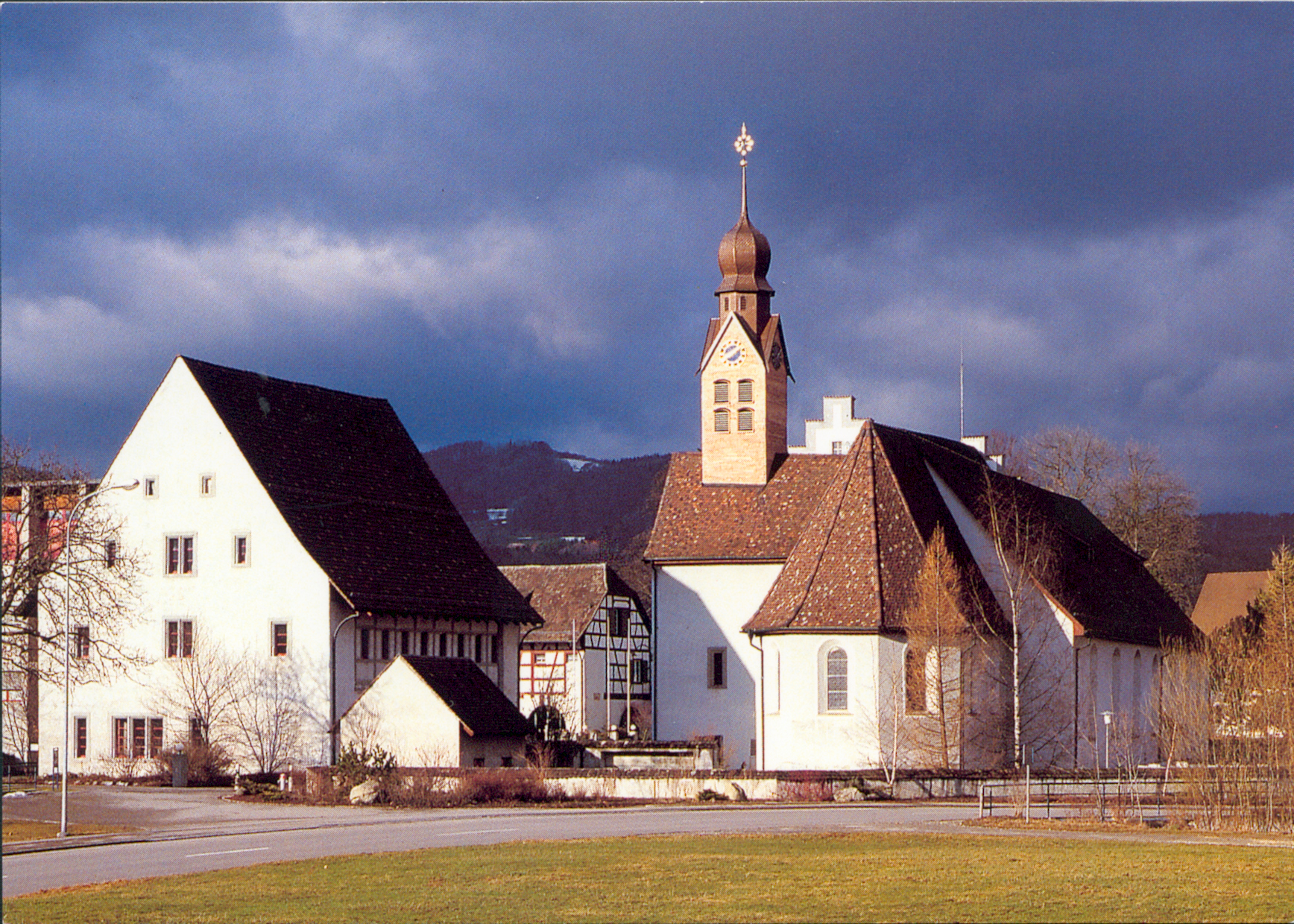Tänikon Abbey on:
[Wikipedia]
[Google]
[Amazon]
 Tänikon Abbey is a former
Tänikon Abbey is a former
 Tänikon Abbey is a former
Tänikon Abbey is a former Cistercian
The Cistercians, () officially the Order of Cistercians ( la, (Sacer) Ordo Cisterciensis, abbreviated as OCist or SOCist), are a Catholic religious order of monks and nuns that branched off from the Benedictines and follow the Rule of Saint ...
nunnery in the village of Ettenhausen in the municipality of Aadorf in the canton
Canton may refer to:
Administrative division terminology
* Canton (administrative division), territorial/administrative division in some countries, notably Switzerland
* Township (Canada), known as ''canton'' in Canadian French
Arts and ent ...
of Thurgau in Switzerland
). Swiss law does not designate a ''capital'' as such, but the federal parliament and government are installed in Bern, while other federal institutions, such as the federal courts, are in other cities (Bellinzona, Lausanne, Luzern, Neuchâtel ...
. The former abbey church and the conventual buildings, now Agrotechnorama Tänikon, are both Swiss heritage sites of national significance.
History
Tänikon was first mentioned in 789 as ''Tanninchova'' as a local court. In 817 emperor Louis the Pious gave all his lands in Thurgau, including Tänikon, to the Abbey of St. Gall. An established nunnery at Tänikon was first mentioned in 1249. In 1257, the abbey church took over the rights to the nearby chapel of St. Anna. Around the same time Eberhard II and Eberhard III of Bichelsee granted land holdings to the abbey and it became Cistercian. In 1263, Pope Urban IV asked the abbot of Kappel to administer Tänikon. From 1268 the community had a number of lay brothers who lived and worked onsite. They were slowly replaced by secular servants or employees and by 1491 there were no more lay brothers. In 1415 the Hohenlandenberg and Gachnang families donated money to help establish a parishbenefice
A benefice () or living is a reward received in exchange for services rendered and as a retainer for future services. The Roman Empire used the Latin term as a benefit to an individual from the Empire for services rendered. Its use was adopted by ...
for the chapel. By 1520, the abbey owned land or rights in Aadorf, Bichelsee, Elgg, Ellikon, Ettenhausen Gerlikon, Guntershausen, Hagenbuch, Krillberg, Lommis, Niederwil, Stettfurt, Tannegg and Tuttwil. In 1508 Abbess Anna Welter of Blidegg built a new refectory on the grounds.
During the Protestant Reformation in 1523 several nuns left the abbey. When the Protestant Council of Zurich visited in 1525, there were still 13 nuns in residence. A few years later, in 1532, the abbess retired though a few sisters remained. Sophia von Grüth was appointed caretaker over the monastery in 1548. Two years later she was raised to be the abbess and the Abbot of Wettingen was appointed as the abbey's Visitor
A visitor, in English and Welsh law and history, is an overseer of an autonomous ecclesiastical or eleemosynary institution, often a charitable institution set up for the perpetual distribution of the founder's alms and bounty, who can interve ...
. It became a center of the Counter Reformation and in 1606 all nuns were required strictly to obey the rules of the order. During the 17th century, the community grew and several new buildings were built, including the prelate's house in 1616 and the abbess's house in 1678.
During the wave of secularization that followed the Helvetic Republic
The Helvetic Republic (, , ) was a sister republic of France that existed between 1798 and 1803, during the French Revolutionary Wars. It was created following the French invasion and the consequent dissolution of the Old Swiss Confederacy, ma ...
, much of the abbey's land was nationalized. After 1804, the community were virtually forbidden to accept any new novitiate
The novitiate, also called the noviciate, is the period of training and preparation that a Christian ''novice'' (or ''prospective'') monastic, apostolic, or member of a religious order undergoes prior to taking vows in order to discern whether ...
s. The Thurgau Cantonal Constitution of 1831 placed all the abbey's assets under state control. In 1836, the canton appointed a trustee and sold off the lands. In 1848 the Grand Council of Thurgau
The Grand Council of Thurgau (german: Grosser Rat) is the legislature of the canton of Thurgau, in Switzerland. Thurgau has a unicameral legislature. The Grand Council has 130 seats, with members elected every four years.
The council has the un ...
dissolved the abbey and took over the buildings. Two years later, 1850, they sold the nunnery and chapel to the Planta family and the Tänikon parish church. In 1853, the nuns moved into the former Capuchin friary at Frauenfeld. In 1869 they moved again to Mariastern Abbey in Vorarlberg in Austria. The premises were sold in 1936 to Otto Zuber and in 1969 were taken over by the new ''Eidgenossenschaft Forschungsanstalt für Betriebswirtschaft und Landtechnik'' (Swiss Federal Institute of Business and Agriculture), which in 2006 became the Agrotechnorama Tänikon.
During the 15th and 16th centuries, parts of the abbey were demolished and later a road was built through the cloister. The former abbey church includes a marble pulpit
A pulpit is a raised stand for preachers in a Christian church. The origin of the word is the Latin ''pulpitum'' (platform or staging). The traditional pulpit is raised well above the surrounding floor for audibility and visibility, access ...
and altar by Johann Josef Mosbrugger from 1830-31.
List of the Abbesses
Agrotechnorama Tänikon
The Agrotechnorama Tänikon is a museum dedicated to the development of agricultural technology in the 19th and 20th centuries. The museum occupies the former abbey barn and includes about 750 objects from 1813 to 1984 showing the transition from manual labor to animal powered and mechanized farming. The museum is open by appointment only.References
{{DEFAULTSORT:Tanikon Abbey Cistercian nunneries in Switzerland Christian monasteries in Switzerland Cultural property of national significance in Thurgau